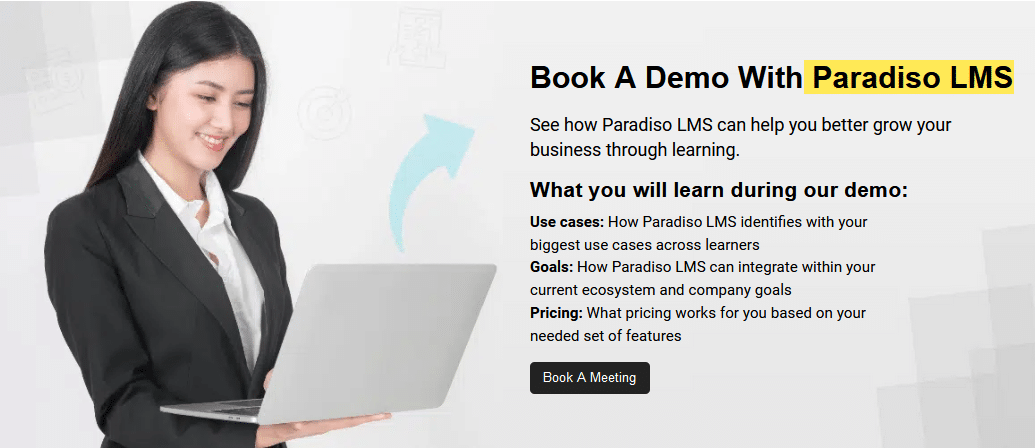Table of Contents
What is a Learning Management System (LMS)?
A Learning Management System (LMS) is a software application designed to manage, deliver, and track educational courses, training programs, or learning and development programs. An LMS can streamline administrative tasks, reduce training costs, and improve learner engagement by providing access to courses, assessments, and learning materials all in one place. In 2025, the relevance of LMS continues to grow, particularly in the context of remote work and digital learning.
Modern LMS platforms allow organizations to store all learning materials in one central repository, track learners’ progress, and generate reports. In addition, the integration of AI and machine learning is pushing LMS technology into a new era of personalized learning experiences, offering tailored content based on learner preferences and performance.
LMS platforms are increasingly becoming essential tools for businesses, educational institutions, and even government bodies. They are crucial for keeping track of training requirements, ensuring compliance, and enabling continuous professional development (CPD) opportunities.
Whether you’re aiming to deploy compliance training or build a knowledge-sharing platform, an LMS serves as the backbone for achieving these objectives. With customizable features and a range of deployment options, LMS platforms are becoming more flexible and adaptable to various industries.
With so many LMS solutions available, it’s essential to understand the basic concepts, functionalities, and benefits of these systems before deciding which one is right for your needs.
Types of Learning Management Systems
Learning Management Systems come in various forms, each designed to meet the needs of different organizations. Understanding these types will help you choose the best LMS for your learning objectives.
Cloud-based LMS
Cloud-based LMS solutions are hosted on remote servers, accessible via the internet. These systems offer flexibility, scalability, and ease of use. You don’t need to invest in physical infrastructure, making them ideal for businesses looking for a cost-effective, scalable solution that allows for easy updates and security patches.
Cloud-based LMS platforms are ideal for companies with a distributed workforce or those who prefer subscription-based pricing models.
Self-hosted LMS
In a self-hosted LMS, the system is installed and managed on your own servers. While this gives organizations full control over customization and data, it also means that they are responsible for maintenance, security, and updates. This type of LMS may require a larger upfront investment but can provide more control over user data.
Open-source LMS
Open-source LMS platforms provide free access to their source code, allowing organizations to customize the software according to their specific needs. While open-source systems are highly flexible and cost-effective, they may require in-house technical expertise to maintain and update the software.
Enterprise LMS
Enterprise LMS platforms are designed for large organizations that need a robust, scalable solution. These systems typically come with advanced features like compliance management, learner analytics, and integration with other enterprise systems, such as HR software or CRMs.
Social LMS
Social LMS platforms incorporate social learning features like discussions, forums, and content sharing, allowing learners to interact with one another in a collaborative environment. This type of LMS is well-suited for organizations that emphasize community-based learning.
Benefits of Using an LMS
Learning Management Systems provide numerous advantages, whether you’re a small business, large corporation, or educational institution. Here’s a deeper look at the key benefits of adopting an LMS:
Centralized Learning
All course content, materials, and learner data are housed in a centralized system, making it easy for both administrators and learners to access resources. This centralized approach eliminates the need for physical classroom setups and ensures that everyone has access to the same materials, regardless of location.
Progress Tracking & Reporting
LMS platforms offer real-time tracking of learner progress. Administrators can track course completion, grades, and participation levels. This feature is crucial for monitoring learner engagement and identifying areas where additional support may be required.
Cost Efficiency
Implementing an LMS reduces training costs by eliminating the need for in-person sessions, printed materials, and travel expenses. Additionally, cloud-based LMS platforms offer subscription pricing, making them an affordable option for organizations of any size.
Scalability
An LMS can scale to meet the needs of growing organizations. Whether you have a few employees or thousands, an LMS can accommodate your learners and expand as your organization evolves.
Compliance & Certification
For industries with strict regulatory requirements, LMS platforms offer built-in compliance training and certification tracking. This helps ensure that employees remain up-to-date with industry standards and regulations, reducing legal risks for the organization.
How Does an LMS Work?
Understanding how an LMS operates is crucial for maximizing its potential. The LMS platform typically follows a four-step process to deliver a seamless learning experience.
1. Course Creation and Management
Administrators create and upload course content, including documents, videos, quizzes, and assignments. The content can be organized into modules or lessons, making it easier for learners to navigate through the material.
2. Learner Enrollment
Learners are enrolled into courses either manually or automatically. In some cases, the LMS can integrate with HR software or other systems to automate the enrollment process based on employee roles or training needs.
3. Content Delivery
Courses are delivered through the LMS platform, allowing learners to access them at their convenience. Whether it’s a self-paced online course or instructor-led session, the LMS ensures content is delivered effectively and efficiently.
4. Progress Monitoring
As learners engage with the course, the LMS tracks their progress. It records activities such as quiz results, course completion, and certification status. This data is then used to generate reports, which can be accessed by administrators.
LMS Features and Pricing
When choosing an LMS, it’s important to evaluate both its features and pricing to ensure it meets your specific needs.
Key LMS Features
- Course Management: Create, organize, and manage courses with ease.
- Interactive Content: Incorporate quizzes, assessments, and multimedia to engage learners.
- Mobile Access: Ensure that learners can access content on any device, at any time.
- Reporting and Analytics: Get real-time insights into learner performance and course effectiveness.
- SCORM Compliance: Ensure that content is SCORM-compliant, so it can be shared across different LMS platforms.
LMS Pricing Models
LMS pricing typically varies depending on the deployment model (cloud-based or self-hosted), the number of users, and the features offered. Common pricing models include:
- Subscription-based: Pay for the LMS on a monthly or annual basis.
- Pay-per-user: Pay based on the number of active users or learners.
- One-time fee: A one-time purchase fee for the system.
Use-cases of Learning Management Systems
An LMS can be used across multiple industries and organizations. Here are some common use-cases:
Corporate Training
Companies use LMS platforms to deliver compliance training, soft skills development, leadership programs, and more. By centralizing content, companies can ensure that employees have access to the necessary training materials at all times.
Educational Institutions
Schools, colleges, and universities use LMS to offer online courses, manage assignments, and track grades. These platforms provide a centralized location for students and educators to collaborate and track progress.
Healthcare
Healthcare organizations use LMS for continuous education, certifications, and compliance training for staff, helping ensure they stay updated with the latest medical guidelines and standards.
How to Choose the Right LMS for Your Organization
Choosing the right LMS requires careful consideration of your organization’s needs, budget, and learning objectives. Here are key factors to evaluate:
- Customization: Does the LMS allow you to customize courses, branding, and user interfaces?
- Integrations: Does the LMS integrate with other software, like HR tools or CRM systems?
- Scalability: Will the LMS grow with your organization?
- Support: Does the LMS offer sufficient customer support and training resources?
The Future of LMS in 2025 and Beyond
The LMS market is evolving rapidly, and in 2025, we expect several trends to emerge:
- AI Integration: LMS platforms will increasingly leverage AI to personalize learning and automate administrative tasks.
- Gamification: Expect more interactive and gamified learning experiences to enhance engagement.
- Microlearning: Short, focused learning modules that are easier to consume on the go.
Frequently Asked Questions
1. What is the difference between a cloud-based LMS and a self-hosted LMS?
A cloud-based LMS is hosted on remote servers and is accessible via the internet, while a self-hosted LMS is installed on your own servers, offering greater control but requiring more resources for maintenance.
2. How do I choose the best LMS for my organization?
Consider factors such as customization, scalability, integrations with other systems, pricing, and customer support when choosing the right LMS.
3. Can LMS platforms be used for compliance training?
Yes, many LMS platforms are designed to offer compliance training and certification management, making it easier to ensure employees meet legal and regulatory requirements.

















